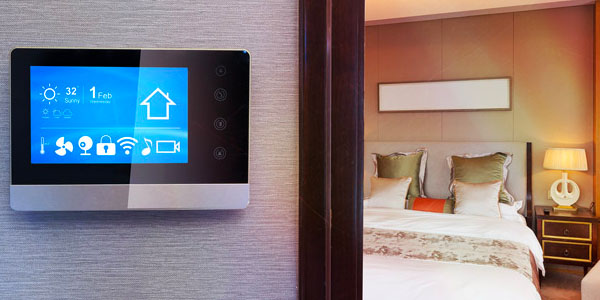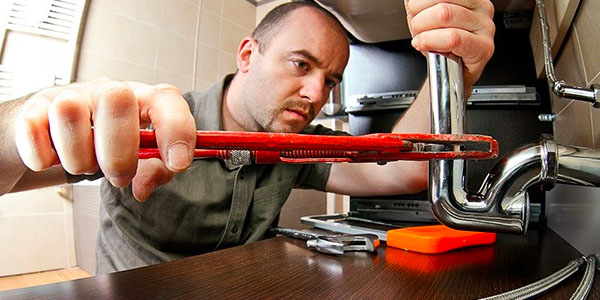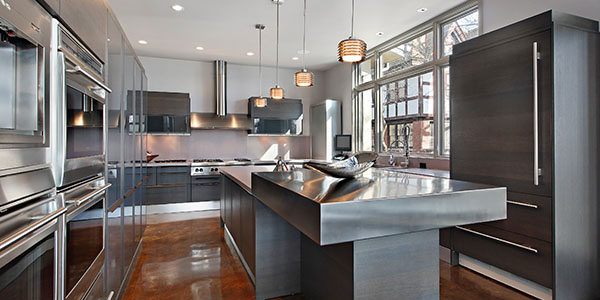What Appliances Use the Most Electricity?

What’s Costing You the Most On Electricity?
Electricity doesn’t grow on trees, but it can definitely cost you plenty of green. In fact, the average American household spends $1,351 on electricity every year. To put it in perspective, that’s almost the same amount you spend on a year’s worth of gas for your car.
To really make a dent in your electric bill, you need to do more than just unplug a few things while you’re not using them. That’s why we’ve put together a list showing you what appliances use the most electricity in your home. With our home energy usage breakdown and simple cost-saving tips from Eyedro Green Solutions and Sense Labs, you can focus on making cuts where they matter most.
Average Home Power Usage Costs for Common Appliances
Central Air and Heating
Costs You: $1,100 per year on average.
Your HVAC system is typically the number one energy user in your home. After all, it runs near-constantly, all year long. Luckily, you have plenty of control over this system — and plenty of easy opportunities to lower your costs.

Best Ways to Save on Electricity Costs for Your HVAC System:
- Install a programmable or smart thermostat. Set it at a comfortable temperature and program it to run less at times when no one’s home. Then leave it alone. Frequently changing your thermostat settings wastes an enormous amount of energy.
- Change your air filter regularly — 3-4 times per year is alright but every 30 days is ideal — and keep the outdoor unit free of debris. This ensures that your system runs at peak efficiency.
- Every year, check your ductwork for air leaks. You don’t want the air you’re paying to heat and cool escaping into your attic or walls.
- Upgrade an older system. Furnaces and air conditioners can last about 15 years before they stop working efficiently. If yours are past their prime, consider replacing them with Energy Star-rated models.

“Typical indoor temperature for the winter is 68-71F (20-22C) while the typical indoor temperature for the summer is 77-80F (25-27C). These temperatures can be adjusted up/down, using a programmable thermostat, based on typical occupancy and sleep patterns within the home. Another tip is to keep the doors and windows closed while the furnace or AC are on. Closing the curtains during the peak sun hours of the cooling season can help reduce the indoor heating caused by the sun.”
Nick Gamble | Eyedro Green Solutions
Water Heater
Costs You About: $781 per year on average.
Your hot water heater generally only runs about 3 hours each day, but during that small window it uses an enormous amount of electricity. In fact, we didn’t include dishwashers or washing machines on this list because their electricity use is negligible — it’s the hot water that really costs you. The good news is that there are ways to lower your power usage here without sacrificing hot showers.

Best Ways to Save on Electricity Costs for Your Water Heater:
- Lower your water heater’s thermostat to 120 degrees. Safety note: if your unit’s thermostat is behind screw-on panels, turn off power to your heater before opening them.
- Wrap your water heater in an insulation blanket with your unit’s recommended R-value. You can find the R-value, which refers to a material’s insulation capacity, in your owner’s manual.
- Wash your clothes in cold water. Modern detergents are just as effective in cold water and your clothes will hold their shape and color longer this way.
- Stop hand-washing. It actually uses more hot water than running a full dishwasher.
- Drain the sediment from your heater’s tank twice per year. This project takes less than 15 minutes and will make your unit much more efficient.

“When doing laundry, use the appropriate settings on the washing machine - choose the appropriate cycle, size and temperature based on what you are washing. And don't leave loads sitting in the washer or dryer longer than they need to be…I don't know how many times loads have to be re-washed or 'fluffed' because someone left it sitting in the washer/dryer for two days.”
Nick Gamble | Eyedro Green Solutions
Lighting
Costs You About: $4.80 per incandescent lightbulb per year.
While $4.80 doesn’t sound so bad, it adds up fast when you consider just how many lightbulbs your home contains — and how long you leave them on each day. But there are plenty of ways you can curb your power usage here.

“Incandescent light bulbs are still costing homeowners millions of dollars every year. Many states have programs where they’ll replace your incandescents with LED light bulbs for free! And even if you have to buy the LEDs yourself, they will easily pay for themselves within the year. Many homeowners don’t even realize how many incandescents are still in their home, and that’s where energy monitors like Sense can be helpful.”
Bradford Swanson | Sense Labs, Inc.
Best Ways to Save on Electricity Costs for Your Lighting:
- Switch to energy-efficient CFL or LED lightbulbs, especially for your most-used light fixtures.
- Rely on lamps wherever possible. They cost less on electricity than overhead lighting and allow you to light only the area of a room you’re actually using.
- Install dimmer switches. This allows you to use less electricity whenever bright light isn’t needed.
- Leave your lights off during the day unless they’re truly needed. Always switch off the lights anytime you’ll be out of a room for longer than 15 minutes.
Refrigerator
Costs You About: $189 per year on average.
While your refrigerator doesn’t cost you as much on electricity as some other appliances, it’s one you should pay special attention to. After all, you can’t just unplug your fridge to save electricity while you’re at work or out of town. So, it’s important to find ways to keep it running as efficiently as possible.

Best Ways to Save on Electricity Costs for Your Refrigerator:
- At least once a year, pull your refrigerator away from the wall and clean the coils. This ensures your fridge doesn’t have to work as hard to maintain its temperature.
- Place your fridge as far from your oven as possible. This will prevent it from heating up as the oven runs.
- Cool hot dishes on the counter. This will keep the refrigerator from heating up, requiring more energy to drop the temperature back down.
- Keep your refrigerator between 37-40 degrees. Setting it lower than that wastes both electricity and food, since this is the ideal range for keeping foods edible without causing vegetables to go bad too quickly.

“Where the costs can really get out of control are with spare refrigerators that someone might have running in a garage or basement. These are often older and less efficient models, and they may also be fighting against the external temperature in those environments, which could cause them to cost 3-5x as much as your modern kitchen fridge.”
Bradford Swanson | Sense Labs, Inc.
Dryer
Costs You About: $104 per year on average.
Especially for households that do laundry multiple times each week, your dryer is another appliance that costs you big on electricity. But like most items on this list, you can cut that power usage significantly with a few very simple tricks.

“Air drying outdoors is always a great option if you have space, but during these cold winter months, it can be worth setting up some drying racks inside your home. Not only does it save energy, it also provides some free humidification to your dry home.”
Bradford Swanson | Sense Labs, Inc.
Best Ways to Save on Electricity Costs for Your Dryer:
- Empty your dryer vent after every load and clean your outside exhaust vent at least twice per year. Both tasks take just seconds but will greatly improve your dryer’s energy efficiency.
- Place your dryer as close to where its exhaust vent lets out as possible. The shorter the distance, the less electricity your machine will use to push exhaust air out.
- Use a faster spin cycle on your washing machine. More water spun out of your clothes means less time — and electricity — spent drying.
- Separate clothes that dry quickly from those that take longer. Always dry full loads of each group of clothing.
Get the guide to make more energy-efficient upgrades to your home.
Desktop Computer and Television
Your Computer Costs You About: $196 per year on average (assuming full power mode).
Your Television Costs You About: $38 per year on average.
Despite our collective Netflix habit and 10-plus hours of daily internet-ing, your TV and desktop computer are drops in the bucket compared to the electricity use of most other appliances in your home. But while you should focus your energy-saving efforts on bigger fish, these two items give you plenty of leeway to lower their electricity use even further.

“Timed power strips and smart plugs can help mitigate these costs, and pay for themselves over the course of a year in energy savings.”
Bradford Swanson | Sense Labs, Inc.
Best Ways to Save on Electricity Costs for Your Computer and Television:
- Put your computer in sleep mode before you do the same yourself. Better yet, just turn your computer off while you’re asleep. It’s so obvious, but so few of us do it.
- If you’re planning to be away from home for a few days, unplug both your computer and TV from the wall before you leave.
- Avoid Plasma screens – when it comes to TVs, they’re the biggest energy hogs.
- During the day, set your TV to energy-saving mode, which lowers the screen brightness. You can set it back to full power at night, if necessary.

“Using an energy monitoring product, like Eyedro, you can go around the home unplugging appliances to see which ones are 'energy vampires'—continuing to suck energy even when you’re not actually using them. Once you determine the energy vampires, it becomes a trade-off about which ones you are willing to unplug while not in use - some things like entertainment systems can take several minutes to start back up once they've been unplugged... and I probably wouldn't unplug all the kids’ night lights either!”
Nick Gamble | Eyedro Green Solutions



